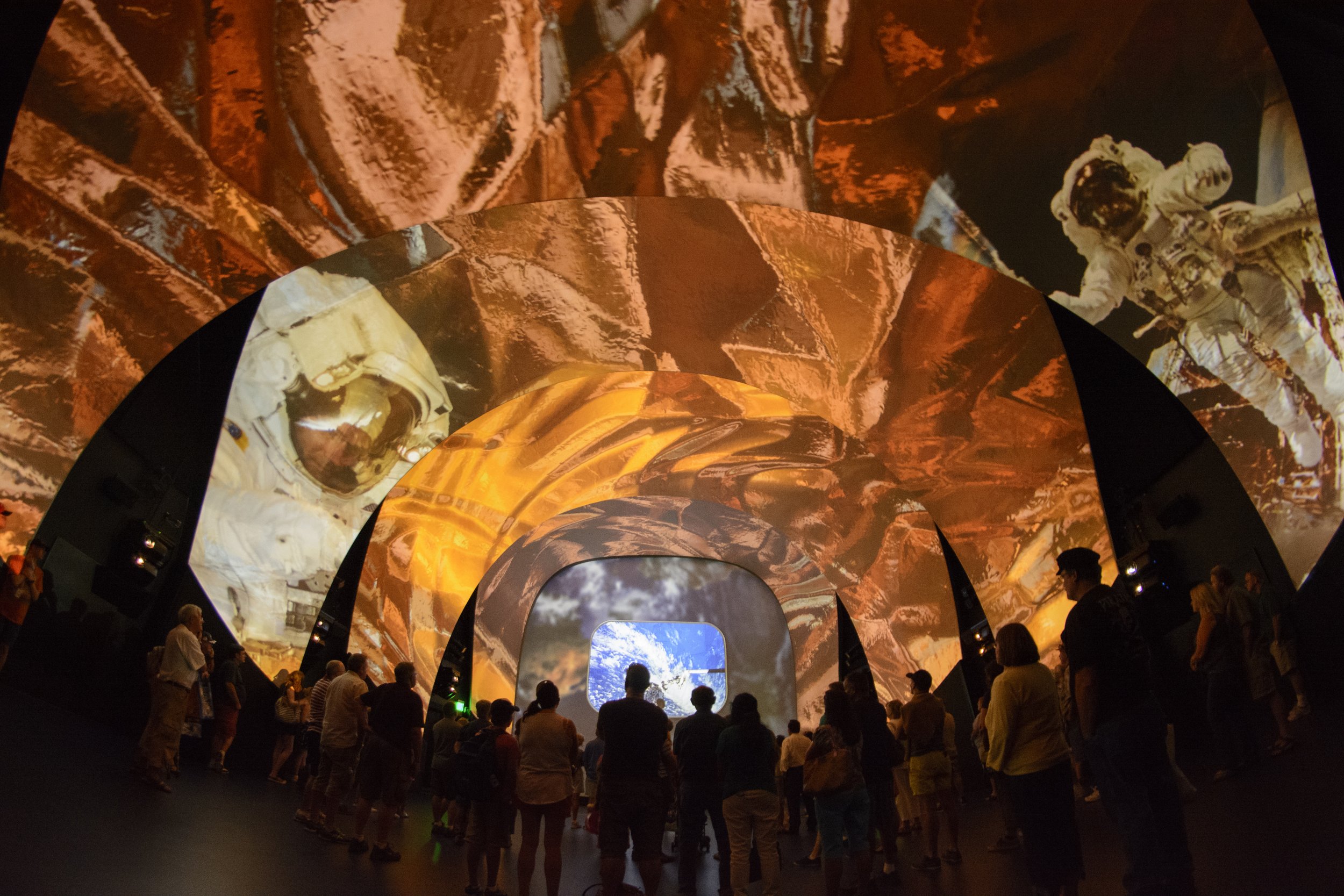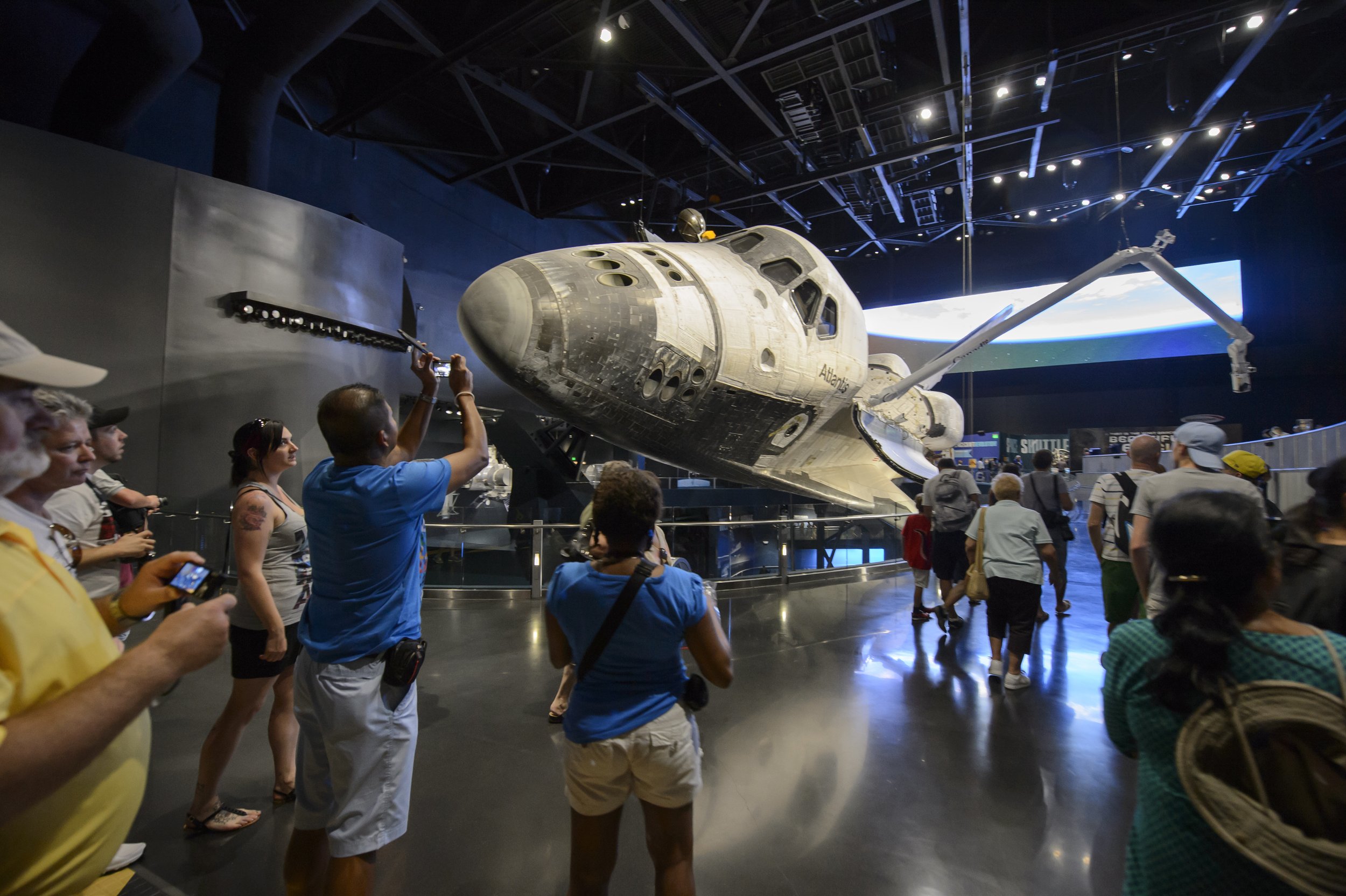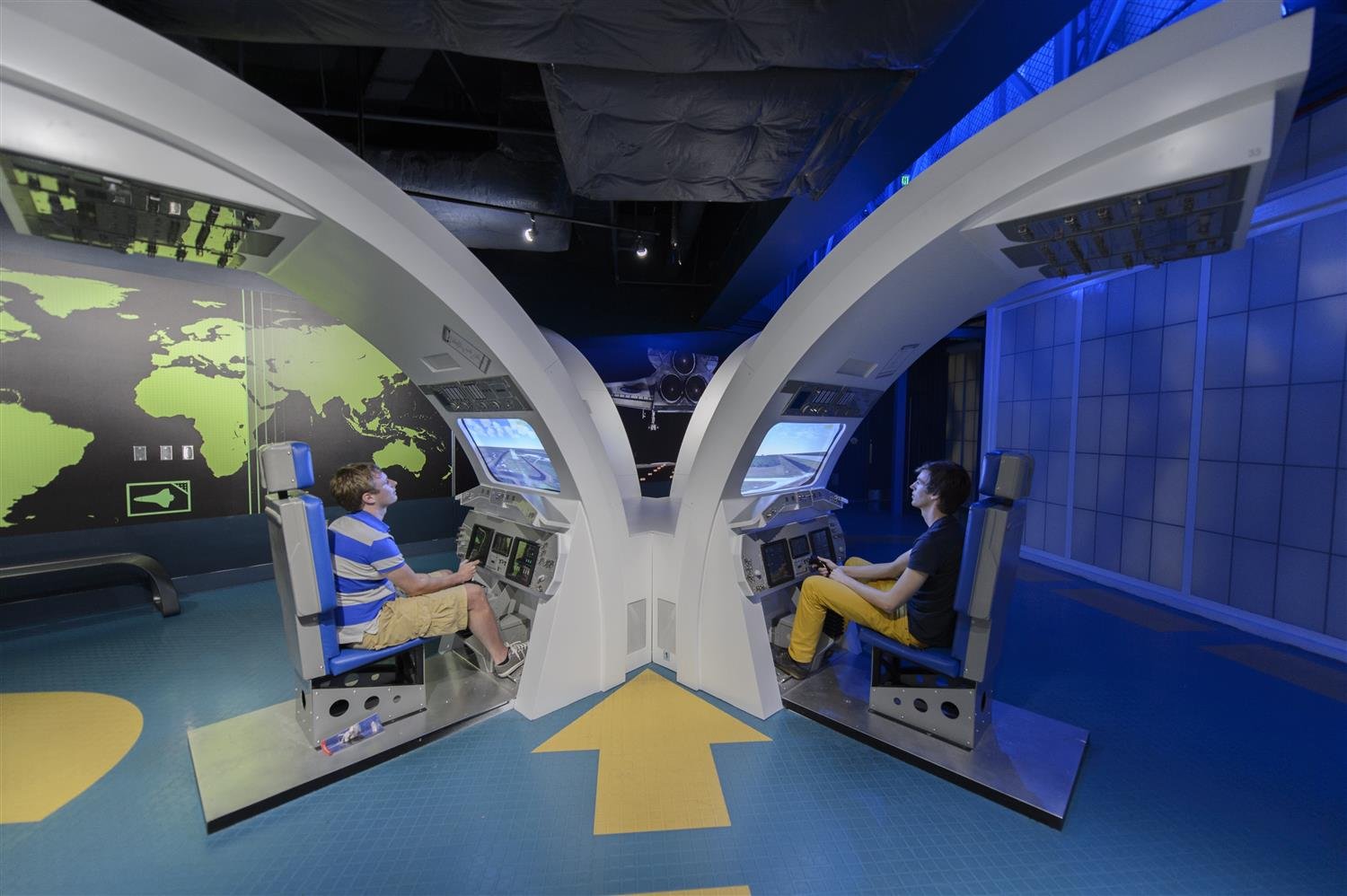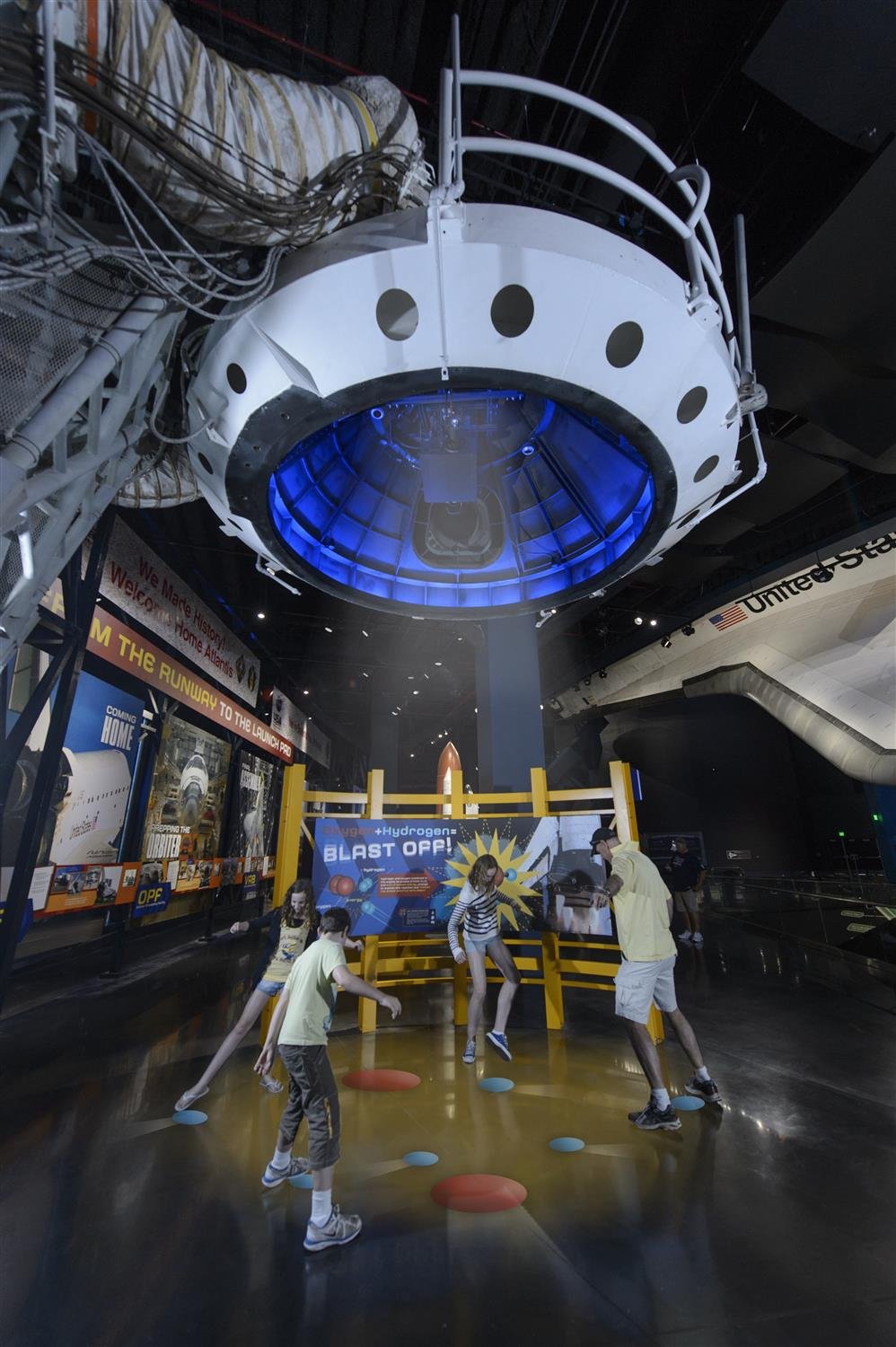Interactive Take-Off
Space Shuttle Atlantis at the Kennedy Space Center Visitor Complex opened in 2013 with a goal: To inspire the next generation of space explorers. The Atlantis Shuttle is incredibly impressive on its own, but interactive exhibits and simulators help immerse people in the experience. Space Shuttle Atlantis continues to receive high marks on review sites like Tripadvisor even after opening nearly ten years ago, demonstrating that well-planned and thoughtful use of digital technology can enhance an attraction for years to come.
Tom Owen, PGAV Vice President and Exhibit Designer, and Doug Nickrent, a Senior Designer at PGAV, were leaders on the Atlantis design team and felt telling stories through interactive elements would be vital in giving the site longevity and attracting a younger audience.
“These digital elements add energy and fun, making it more conducive to learning while appealing to multiple generations,” Owen commented.
The team wanted to use digital technology for the right reasons. “We looked at what tools were available to tell the story of Atlantis and the Shuttle program. “Digital technology was not used only for the sake of digital technology. We put the experience of space travel at the forefront and considered how to tell that story best.” Nickrent added, “The Atlantis media experience incorporated new types of technology with more traditional pieces to create an experience that continues to inspire people. Digital technology allows you to do things that would be impossible in the space you’re in and go places away from where you are.”




The team sought ways to harness digital technology to draw people in immediately. Before entering the exhibit space, visitors are surrounded by the story of Atlantis in an immersive theatre. Owen said, “Younger visitors to Kennedy Space Center didn’t grow up with a connection to the Shuttle program. The pre-show was designed to tell the backstory of Atlantis and build an emotional connection to carry those visitors through the experience. When the shuttle is dramatically revealed, visitors are emotionally connected and motivated to explore and dig deeper into the content.”
Moving through the experience, simulators add a layer of learning and interaction. Visitors are invited to be astronauts by completing tasks through simulators, including landing a shuttle, taking a spacewalk, and docking with the International Space Station. Owen said, “The simulators are built into cutaway pieces of the shuttle, so switches, monitors, and even windows reflect the actual environment. Visitors have already been nudged into the world of pretend play by the time they use the simulator.” One simulator utilizes motion gesture technology to take visitors on a spacewalk. “Gesture technology is inherently a little clunky. Using that to replicate the challenges an astronaut would face attempting to use a wrench in a microgravity environment enhances and realistically replicates the experience for visitors,” Owen commented.
Digital technology also provided a unique way to handle displaying objects at Atlantis. The Atlantis exhibit shows the oxygen vent hood called a beanie cap that sat atop the Atlantis before launch. It’s massive and provided designers a chance to make it a “wow” moment rather than just a display. The beanie cap was mounted to the ceiling, and digital projection allowed visitors to “kick” hydrogen and oxygen modules together to create the chemical reaction that launches a rocket. Kick enough together, creating a chain reaction, and the space shuttle launches from the floor seemingly right past the visitor.
For digital pieces to be functional, they need to be integrated into the overall experience. “There’s a rule of thumb in designing games: the best games are easy to learn and difficult to master. The same applies to the use of digital technology. It should be intuitive but provide enough challenge to keep it interesting.” Nickrent said.
Shuttles no longer launch, but the mission of NASA continues. The digital elements at Kennedy Space Center’s Visitor Complex allow that story to be told and updated. Additionally, a new generation of space explorers is engaged with NASA’s history, mission, and future. And who knows, maybe one of them will grow up to explore Mars.
Reinvention is more fun with friends. Got a topic you want to see on Destinology?
Email us at destinology@pgav.com or start a conversation on Facebook, Twitter on LinkedIn.
Tap the buttons below.


